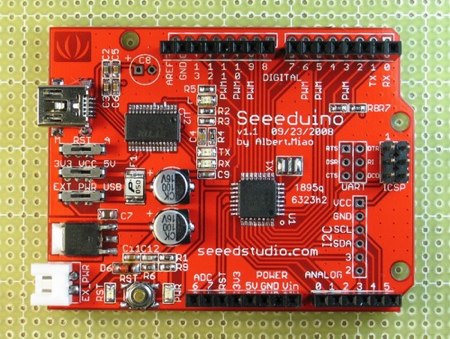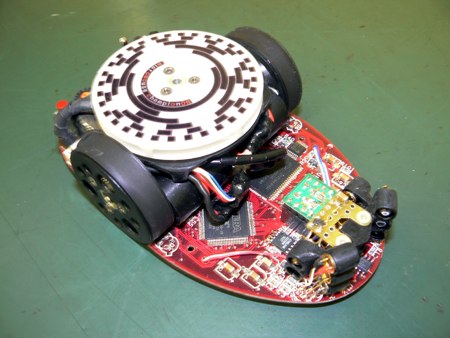Lockpicking operation game

[Moritz Waldemeyer], a favorite artist of ours, has a brand new project. He went wanting to design a 3D version of the game Operation. The piece he ended up with is called Keyhole Surgery. It’s essentially the laparoscopic version of operation. The player guides a metal key through the passages of a translucent block while attempting not to touch the walls. A counter on the side displays how many hits it has detected. The player with the smallest number wins. We love the modular potential of this project: the number of layers could be increased, the order could be changed, and more.

Arduino buyers guide and the Seeeduino

Make has assembled a buyers guide for the many different types of Arduino devices. The Arduino is an open hardware platform designed to make prototyping easily accessible. The design allows for other people to modify, expand, and improve on the base, and many people have started producing their own versions. The guide features a lot of the hardware we’ve covered in the past like the LilyPad, Arduino Pro, Sanguino, Duemilanove, Ethernet Shield, and Freeduino.
Out of the pack, the Seeeduino (pictured above) definitely caught our eye. It’s a low profile SMD design much like the Arduino Pro. They’ve taken advantage of the space saved by the SMD ATmega168 by adding more useful headers. In addition to the ICSP, you get the pins in UART order and an I2C header. Vcc is switch selectable for 3.3 or 5volts. The reset switch has been moved to the edge plus two additional ADC pins. Our favorite feature is the new spacing on the digital pins. Arduino digital pin headers have an inexplicable 160mil gap between the banks. The Seeeduino has the standard row for shield compatibility, but has an additional row spaced at standard 100mil spacing for use with protoboard. At $23.99, it’s competitively priced too.

Vacuum micromouse

Micromouse competitions have been running in Japan since 1980. In all that time, the ruleset has remained essentially unchanged. The autonomous robot mouse navigates a 16×16 maze creating a map. It then determines the optimal solution for future runs. Current records are in the six to seven second range. Teams have had to find new ways to generate traction for better times. Momoco08 uses a fan to hold the mouse to the track surface. Embedded below you’ll find a video of it solving the maze plus a photo of the vacuum skirt.

[photo: Robot Watch]

Lori Drew not guilty of felony computer hacking

Today, a Los Angeles jury acquitted [Lori Drew] of three felony computer hacking charges. She was convicted of three misdemeanor counts for accessing a computer without authorization. The 49-year-old Missouri resident posed as a teenage boy on MySpace and harassed her daughter’s estranged friend [Megan Meier], who then committed suicide. The case came to our attention in May because of it’s unorthodox use of the federal Computer Fraud and Abuse Act. Prosecutors charged that by violating MySpace’s Terms of Service, [Drew] had gained unlawful access to their computers for the purpose of harming others, an equivalent to computer hacking. While an interesting approach to cyberbullying, it would set a very dangerous precedent for anyone that had violated a TOS before (all of us). The case broke when [Drew]’s employee [Ashley Grills] testified that no one involved had read the TOS, that the hoax was all her idea, and that she sent the final message to [Meier].

You received this email because you are subscribed to the real_time feed for http://hackaday.com/feed/. To change your subscription settings, please log into RSSFWD.

No comments:
Post a Comment